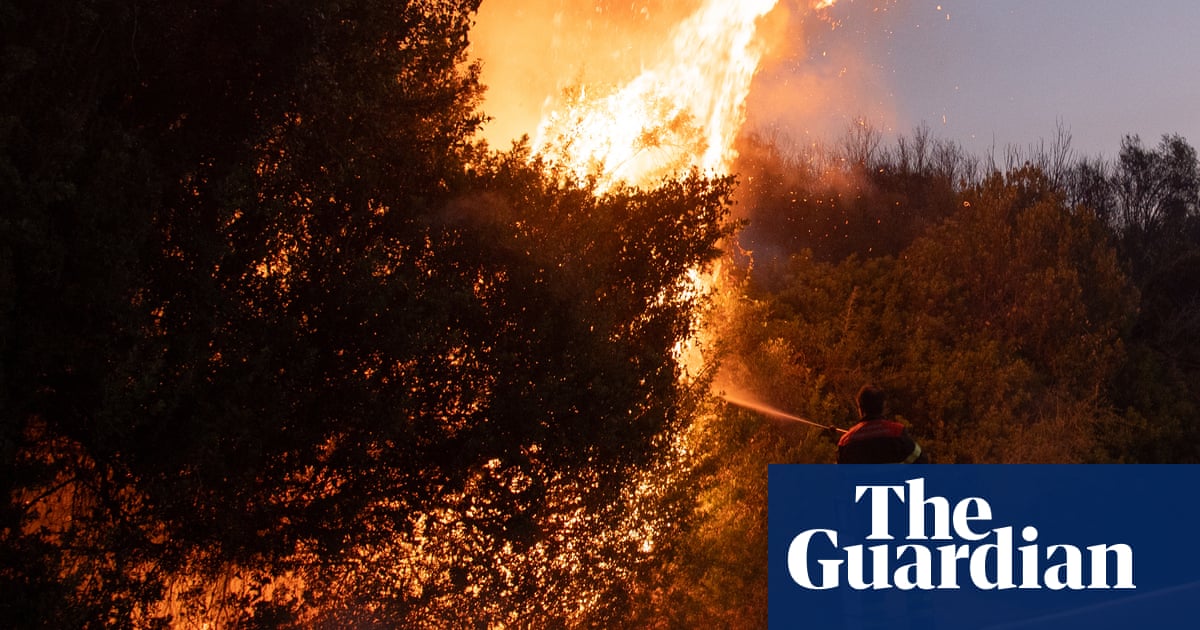
Last month was the world’s worst July for wildfires since at least 2003 when satellite records began, scientists have said, as swaths of North America, Siberia, Africa and southern Europe continue to burn.
Driven by extreme heat and prolonged drought, the ignition of forests and grasslands released 343 megatonnes of carbon, about a fifth higher than the previous global peak for July, which was set in 2014.
“This stands out by a clear margin,” said Mark Parrington, a senior scientist in the EU’s Copernicus Atmosphere Monitoring Service, which estimates the carbon releases. “The July global total this year is the highest since our records began in 2003.”
The unprecedented mid-summer burn is the latest in a series of unwelcome recent records that underscore the destructive impacts of human-driven global heating.
More than half of the carbon came from two regions – North America and Siberia – that have experienced unusually hot and dry weather. In western Canada and the US, forest fires have followed protracted and intense heatwaves. In Siberia, much of the taiga in the Sakha Republic has been engulfed in flames and clouds of toxic smoke that have drifted as far as the north pole.
The global conflagration is widening to the eastern and central Mediterranean, where many nations are encountering an unusually fierce start to the fire season.
Last week, the heat intensity from fires in Turkey was four times higher than the previous daily national record. So far this year, 128,000 hectares (316,000 acres) have burned – eight times higher than the average, according to the European Forest Fire Information System.
The same dataset shows charred areas in Italy have increased from almost zero in mid-June to almost 80,000 hectares, four times higher than the 2008-20 average. In Cyprus, the increase is eightfold; in Greece, double. Spain, France, Albania and North Macedonia are also tracking higher than normal.
Across the region, at least eight people have died, hundreds have been taken to hospital and thousands of residents needed evacuation, including from popular holiday resorts and nature reserves. A map of active fires showed much of the region aglow. Among the worst affected nations was Italy, which is enduring the second worst fire season on record, particularly in the south. The national fire service said it had conducted more than 800 operations, including 250 in Sicily and more than 100 in Puglia and Calabria. The central government has requested support from other nations through the EU civil protection mechanism.
In Puglia, the Difesa Grande forest in Gravina has burned for more than four days, charring 200 hectares. In the resort area of Pescara, tourists, residents and nuns had to be evacuated when flames from the Pineta Dannunziana nature reserve approached beachside hotels, homes and a convent.
On the Greek island of Rhodes, fires threatened the Valley of Butterflies at Psinthos and forced the evacuation of three nearby campsites. The authorities mobilised three Beriev-200 aircraft, six helicopters and more than 100 firefighters to regain control, according to local media.
As hot weather continues, the dangers are widening. Almost all of southern Europe is covered by warnings of “very extreme” or “extreme” fire risk. Much of the region is also threatened by drought.
The number of large fires in Europe continues to increase and vulnerable area are widening, according to the EU’s Disaster Risk Management Unit. “The area affected by fires is expanding in Europe, no longer limited to the Mediterranean countries,” said Jesús San-Miguel-Ayanz, a scientist with the unit. Underscoring this trend, in Finland there has also been a sharp rise in wildfires this summer.
In many parts of the world, the fire season has not yet approached its peak. That is particularly true in South America and Africa, which contribute a far greater share of associated carbon emissions than Europe.









